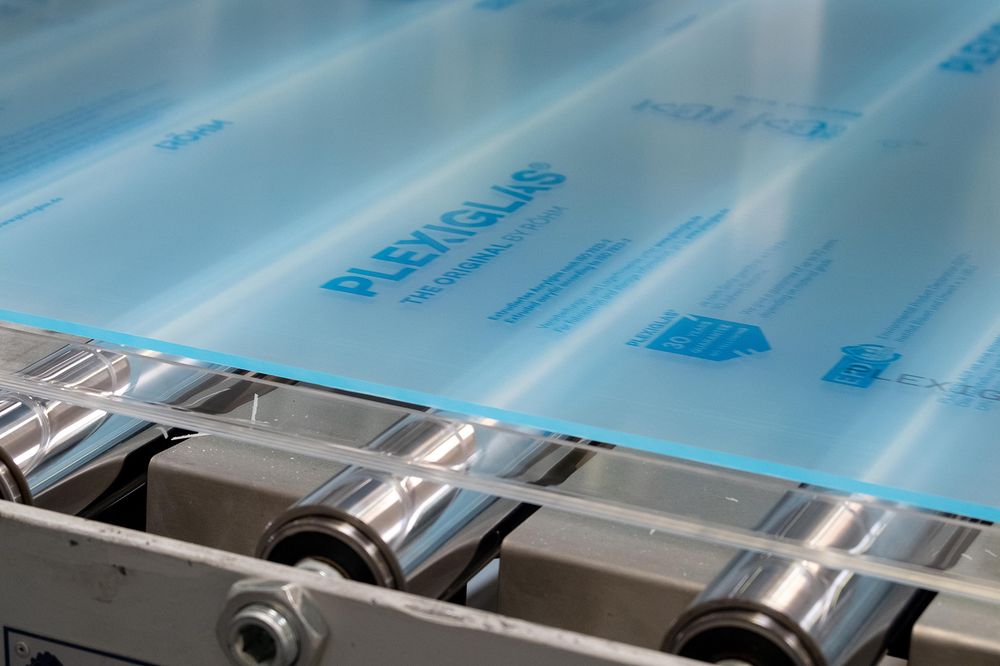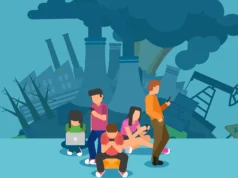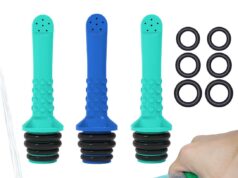The art of using acrylic products is receiving significant popularity nowadays. Almost everyone in one way or another uses products or items made of this material. Acrylic generally is a manufactured fiber where the fiber used to form the product contains a long chain of synthetic polymer. This synthetic polymer is over 85% acrylonitrile units in total.
According to the Federal Trade Commission, acrylic material can be used to manufacture different types of products. Acrylic products range from minor household items to large products, among them, acrylic sheets.
People across quarters of the world using acrylic products for sheeting mostly wonder if their activity has a significant effect on the environment. Seemingly others ask themselves whether they are an eco-friendly alternative for Plexiglas materials. Our article comprises of thorough research and addresses the two questions.
Keep reading and learn more.
Negative environmental impacts of acrylic sheeting
The main reason as to why acrylic sheets are in rapid use for sheeting work nowadays is the fact that there are readily available and cost-friendly. People, however, do not know the elements of adverse environmental impacts that come with acrylic sheeting.
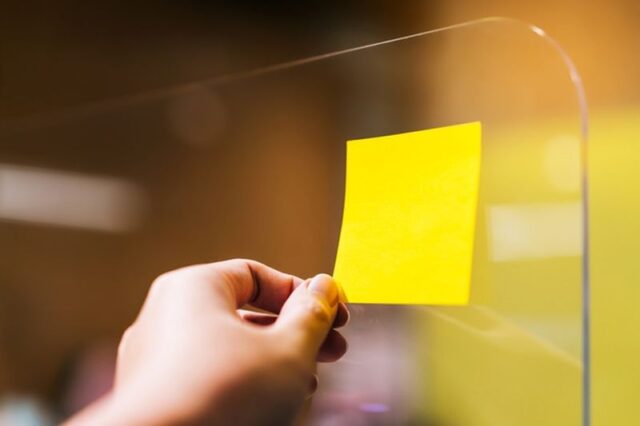
1. Potential to cause global warming potential
The global warming effect on the ecosystem from acrylic sheeting was taken into consideration after an indicator in the greenhouse effect. A calculated estimate shows that for you to manufacture one kilogram of acrylic fiber, about 5.5kgs of carbon dioxide is released into the ecosystem.
The negative impacts that come with the manufacturing process are transmitted into the sheeting process. When the sun shines on acrylic sheets, carbon decomposition takes place, mentioning fragments of carbon dioxide particles. Emitted carbon particles go to the ozone layer hence depleting it more significantly.
Scientists have, over a long time, been stressing the need to minimize the global warming effect that comes with the use of acrylic sheets. The only way to achieve this is by optimizing the manufacturing process and reducing energy consumption in different stages of manufacturing.
2. Difficult to recycle
Acrylic sheets are recyclable. However, the process of recycling is quite a challenge. The process is not easy, as you might think it’sits just putting it into a recycle bin to yield a bottling tank. The recommended method of recycling acrylic sheets is using a Perspex and cutting large pieces of acrylic material into smaller pieces. Once you have the pieces, you can continue to model what you intend to achieve.
The act of acrylic material being a challenge to recycle has caused too many acrylic waste materials being deposited everywhere, affecting flora and fauna ecosystems. Plants cannot grow in a place with deposits of acrylic waste materials that impact oxygen-carbon dioxide dissolution negatively.
3. Acidification potential
Acidification of the environment by acrylic sheets and sheeting process begins right from manufacturing. Air pollutants released during textile work for acrylic sheets and the entire energy produced are the second largest pollutant of air from the textile industry. Emission includes volatile substances, especially material that comes with printing, dying, and chemical handling.
To minimize air emissions that otherwise pollute the air during the manufacturing process, the air is scrubbed in a monomer gas absorber and then recycled back to the system; typically, this never happens in an ideal life. Emissions that result from wear and tear of acrylic sheets are never recycled at any place. They are released into the air, becoming a source of environmental pollution.
Not forgetting that emissions of acrylic have nitrogen and sulfur as their main components when it rains, these emissions dissolve in rainwater, forming sulfurous acid, which is acidic rain. Acidic rain has an advanced effect on the environment since it hampers and kills the growth of some plants that would otherwise not do well in acidic conditions. Further acidic rain increases the rate rusting on standard iron sheets and on vehicles as well as causes itching and burning on human skin.
4. Potentially cause Eutrophication
Nitrogen and phosphorus levels on the ecosystem determine the extreme of Eutrophication on the environment. Acrylic sheets are a source of nitrogen and phosphorus, which come as a result of wear and tear. Eutrophication by acrylic materials, however, starts right in the manufacturing process. The boilers of the manufacturing process boil the contents of acrylic at a very high temperature that otherwise fumes out particles of nitrogen and phosphorous in air. This forms the starting point of the eutrophication process on the environment.
When acrylic material is disposed without due disposal procedure nitrogen, and phosphorus emitted to combine with rainwater and get drained on rivers and streams. The most notable significant eutrophication effect is the sprouting of algal. The blooms of algal occur; it results in rivers, streams, and lakes becoming covered with algae. Apart from the algae being beautiful on the look on water sources, it blocks light penetration into the water. Lack of light prevents the growth of aquatic plants.
Prevention of aquatic plant growth negatively affects water animals since they depend on oxygen emitted by aquatic plants.
5. Causes respiratory inorganics
Acrylic sheets have the potential to cause disorders related to the respiratory system. The sulfur IV dioxide, nitrogen II oxide, and nitrogen IV oxide emitted by acrylic sheets increase the acidic amount in food staffs after the occurrence of acidic rain. When humans consume feeds with high acidity content, it results in respiratory inorganics.
Additionally, when the emission of these poisons gases takes place during the manufacturing process, it increases the amount of acid on the ecosystem. This acid has a negative effect on the ecosystem, as we mentioned above.
6. Causes fossil fuel depletion
Fossil fuel has been impacted negatively by attempts to recycle acrylic sheets and other materials. If you take up a look at the entire manufacturing process, you will notice that a lot of energy is used. This energy works to combust acrylic material for them to melt and be modeled into useable materials. This also happens when it comes to the process of recycling.
The recycling process is energy-intensive. The analysis shows that the entire energy required to recycle an acrylic sheet fiber is approximate 133-MJ/kg. This energy is enormous to get making it the reason why recycling acrylic is a challenge.
In 2014 a scientist called Van der Velden estimated that to produce about five kilograms of the acrylic sheet, it takes about 78.4 to 130.1MJ/kg of fossil fuel. This report was further backed up by BSR, a scientist researcher in the US in 2009 with an estimated figure of 157MJ of energy need to manufacture 5-7kgs of acrylic material. All these high-energy requirements impact negatively on fossil fuel with scientist arguing that if the trend continues, a fossil fuel with being outdated.
7. Carcinogenic effects
During the entire process of acrylic manufacturing and sheeting, carcinogenic materials are released from the acrylic sheets. Some of these materials released include arsenic, zinc, cadmium, chromium as well as water and air. Arsenic emission through liquid and air is attributed to copper wires that are used to distribute energy.
8. Environmental Toxicity
The manufacturing process of acrylic products releases a handful of toxic fumes in the air that poison the environment. People who work in textile industries that manufacture acrylic products are provided with protective clothing to prevent themselves from the fumes. When these fumes are released into the ecosystem, and since there consist of mixtures of gases that are poisonous, they hamper oxygen dissolution in air. This results in people inhaling toxic that interferes with overall body health. The result of toxic gases in the air causes diseases like cancer, affecting people across the world.
The negative environmental impacts of acrylic sheeting are enormous. It is vital that manufacturers of acrylic work in harmony to reduce cases of environmental pollution. Further, there is a need to formulate measures on how to effectively recycle acrylic materials so that the extent of pollution on the environment can be put at a minimal level.
Eco-Friendly Alternatives to Acrylic (Plexiglass)
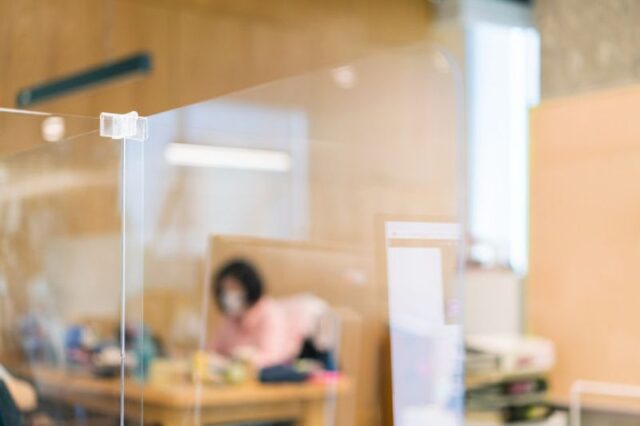
When it comes to the choice of materials to use in homes, the choices are more limited. However, in most homesteads, glass dominates and is often the default material to use. glass tends to be cumbersome, costly, and with low impact resistance, even though people see them as the best homesteads items. What people fail to realize is that they exit alternatives items that serve the same purpose as plexiglass, which is eco-friendly and at low cost.
These items below are the best alternatives for plexiglass. You can find the market.
Polycarbonates
Polycarbonates are new thermoplastics patented by Bayer in 1953. Since they were invented, they have not been in use for a long time, but nowadays people are starting to accept their use. Polycarbonates are now widely being used since they are cheaper, readily available, reliable, and adaptable to a variety of functions. Further polycarbonates are eco-friendly, unlike some material that is made of glass.
Common uses of Polycarbonates
- Polycarbonates are used as eyewear in automotive as well as aviation industries. They serve to protect the eye from any upcoming materials that would otherwise cause injuries on the eye.
- Polycarbonates are used in making DVDs and other electronics that were previously made of glass materials. Since for a long time, polycarbonates were excluded in making complex shapes, manufacturers thought of improving the strength of polycarbonate. This resulted in the polycarbonate becoming less expensive while at the same widening the scope of uses.
Types of polycarbonate
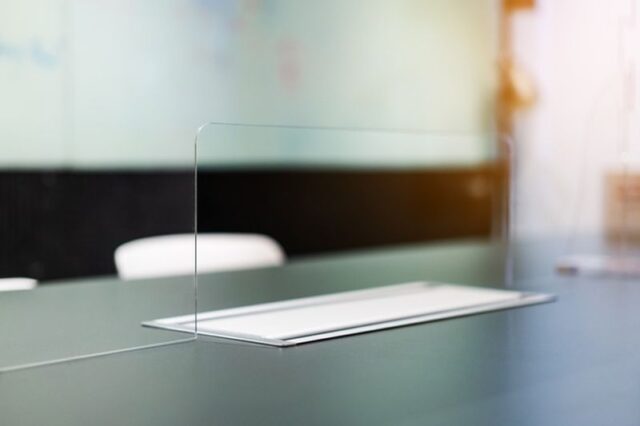
Structured Multiwall sheet
This is an extended polycarbonate that can be put in various uses as per those performed by the glass. Applications of structured Multiwall are either indoor or outdoor, depending on the choice of the user. The extrusion of structured multiwall polycarbonate is a translucent and ice cream sandwich in color. Fins that create channels that look like flutes link the layers of structured Multiwall together.
Features of Structured Multiwall Polycarbonate
- Sheet thickness: The The standard thickness measurements of multiwall polycarbonates are from 4 millimeters to about 32 millimeters in size. However, a range of 6 millimeters to 10 millimeters is the most common measurements of multiwall polycarbonate products you will find in the market.
- Colors: Even though Structured Multiwall polycarbonates come in a wide range of colors, the standard colors are clear, ice, or what we call opal, which is the translucent white and bronze color. These are the most available colors you can get in the market. The advantage of using ice and bronze colors is that they tend to help in controlling heat gain, while those that are translucent bring a lot of diffuse daylight on the inner part of the polycarbonate.
- Shapes: The difference in shapes of Structured Multiwall polycarbonates comes about on wall configurations. The most common shapes of Multiwall polycarbonate product shapes are the twin wall shape polycarbonates. The structure of twin shape polycarbonates is formed by joining, inner, and an outer sheet of one polycarbonate with vertical ribs. The resultant structure looks like a flute and has a thickness of up to 8 millimeters.
- Cost: Depending on the thickness of Structured Multiwall polycarbonates, the standard cost of these materials is $1 to $4 per square foot. This cost typically does not include special coatings or the installation accessories.
- Composition: On estimate, polycarbonates are about 200 times stronger than glass. Surprisingly glass is much heavy compared to polycarbonates. This fact means that working with polycarbonates is quite simple since the need to support them is at all time is minimized.
- Thermal properties: Multiwall panels are composed of an inner air space that forms its increased insulation properties over the standard glass. This property releases an R-value of the range between 1.4mm to 41.1mm. The actual value depends on the intrusion shape and the entire special coating. By chance, this range of measurement forms thermally competes with average insulated glass units.
Advantages and disadvantages of using polycarbonates as alternatives for plexiglass
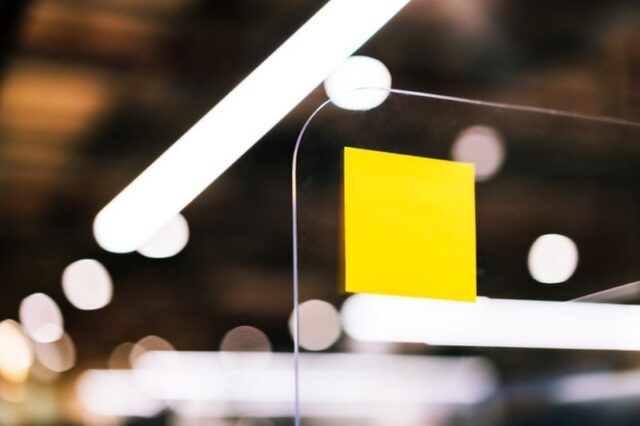
Advantages
- Most polycarbonates are light in weight. They are usually 10 to 20 times lighter than normal glass.
- Polycarbonates have high ability for diffused daylight solutions
- The cost of polycarbonate materials is relatively very low compared to glass.
- Polycarbonate has great resistance to impact resistance. The resistance goes up to a tune of 200 times and almost 30 times that of acrylic materials.
- Polycarbonate is highly recyclable. This makes the reason why there are termed as being eco-friendly.
- If you compare how to cut glass and polycarbonates, you will realize that cutting, polycarbonate is quite easy. Cutting plexiglass requires a special type of tool and can crack and cause injuries during the cutting process. However, with polycarbonate, all you need is a circular saw or any other type of a saw to cut.
- Polycarbonates have a great ability to block extreme UV light compared to the glass material.
- Polycarbonates, unlike glass, have great ability in acoustical properties. This means that when you polycarbonates as sheeting materials for your house, the extent of noise in the house while always reduces significantly.
- People who use polycarbonates as windows and sheets have reported significant positive impacts on how to installation.
- In most cases, glass is not rated to have good thermal efficiency. This makes polycarbonates the best alternative to achieve thermal effectiveness.
Disadvantages of polycarbonates
- Most polycarbonates, despite having a lot of benefits over glass, are subject to UV light damage. The UV light causes yellowing of polycarbonates with time, and if a coating is not applied, the whole polycarbonate can end up becoming yellowish.
- Polycarbonates do not the ability to withstand condensation. Unlike glass, when particles can slide over each other resulting in condensation, particles of polycarbonate are fixed together and do not move.
- Polycarbonates can be scratched to cause stretch marks, unlike glass.
Polyvinyl Chloride Polymers
Polyvinyl polymers are another alternative for plexiglass that is highly eco-friendly. This type of polymer is economical and use in various purposes like in construction, health care centers, electronics, automobile work, and other different sectors. Other uses of polyvinyl chloride polymers include piping, siding, blood tanks, and bags for tubing to insulate and wire cables as well as windshield systems.
Uses of polyvinyl over glass
Typically the vinyl is more versatile compared to glass. This makes the reason why it’sits more used as pliable for plastic wraps, industrial pipes, and as light, flexible wall coverings. Besides, vinyl can be used as a perfect much for different colors.
Construction materials
About three-quarters of vinyl that is manufactured globally goes to construction sites. This is because vinyl is long-lasting when used as window panels compare to glass. Life studies of how Vinyl work and its effect on the environment show the ability to protect the environment through the emission of low greenhouse gas while at the same time conserving resources and energy.
Since vinyl is firm and resistance to moisture and any abrasions, it’sits classified as the best to use for cladding, windows, fencing, decking, roofing, flooring, and wall coverings. Vinyl does not react with moisture or corrode with any material used in building and at the same time, does not require regular painting.
Used for window siding
Unlike glass, Vinyl is more durable. This makes the reason why nowadays people are using it to produce window sides frame that holds the window in place. Additionally, when they are used on windows, vinyl helps to cool houses by emitting hot air out and letting in hot air. Windows made from Vinyl material have at least three times heat insulation ability compared to those made of aluminum.
Healthcare uses
Unless glass, Vinyl is the best alternative that plays a critical safety role when it comes to dispensing lifesaving medicine in UV bags and medical tubing.
Packaging
Since vinyl is more durable, dependable, and light in weight compared to glass, it is widely used in packaging to help maintain the integrity of products. This benefit is more so applied in the packaging of medications that need to be transported in far distances.
Wiring and cable work
Vinyl has a great ability to withstand rough conditions on building walls. These are conditions like exposure to change in temperature and dampness. This makes vinyl to become the most prevalent and more trusted materials to use on electrical cables and wiring.
Conclusion
Based on our discussion, acrylic sheeting has a great negative impact on our environment. The effect of acrylic sheets on the environment starts from the manufacturing stage way up to when they are put into use. It is vital to the manufacturer to ensure that they minimize pollution on the environment since the major negative impact is experienced during manufacturing processes.

